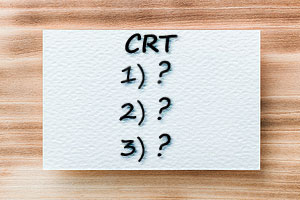
Parents all over America are rising against Critical Race Theory. They confront school boards from Loudon County, Virginia, to San Francisco, California, to oppose the disastrous ideology.
Critical Race Theory by Other Names
On one level, this development is heartening since both conservatives and some liberals are rejecting the theory. However, the anti-CRT struggle follows the pattern of the progressive fiasco Common Core. The minute Common Core enraged parents; the educationists discarded the term. Today, many educationists deny that CRT is present in their schools.
Unfortunately, the ideology has not died; it has only gone underground.
However, those who want to detect hidden CRT teaching in public schools can look for words that the educationists must use to express their ideas.
Thus, the following list of fifteen commonly used terms can help anti-CRT parents recognize an attempt to impose CRT under another name. Students, parents, grandparents or other community members can thus be armed to confront CRT ideas, even when the term Critical Race Theory is not present.
A Glossary of Critical Race Theory Terms
Abolitionist—a complimentary term meaning those who hold “anti-racist” views, especially those which dismantle existing or traditional social ideas and standards.
Help Remove Jesus Bath Mat on Amazon
Anti-Racist—the belief that all ideas have racist overtones. Every condition either helps, perpetuates or destroys racism. Nothing is racially neutral. CRT proponent Ibram X. Kendi coined the term used in his guidebook, How to be Anti-Racist. In his formulation, discrimination against whites is “anti-racist” if it corrects past imbalances.
BIPOC—CRT divides white people from anyone who is not white. BIPOC is an acronym for “Black, Indigenous and People of Color.”
Decolonize (or Decolonization)—a term that describes the need to detach from those who defend tradition labeled as “colonizers.” It is an inaccurate attempt to tie such people to the racist policies of the eighteenth and nineteenth-century colonial powers. To “decolonize” is to do away with traditional society.
Equitable (or Equity)—a term describing any move toward equality. Like all Marxists, the CRT movement teaches that the only legitimate goal for a just society is to make all people socially and economically equal regardless of their differing talents, efforts or abilities.
Satanic Christ Porn-blasphemy at Walmart — Sign Petition
Hegemony—a pejorative term that describes traditional social organization and hierarchy forms, which CRT advocates see as being run exclusively by white Christian males.
Inclusion—any action to make society more equitable. Such measures include taking property, money or “privilege” away from those who currently possess (or historically possessed) these benefits and bestowing it upon those from an “oppressed” class.
Intersectionality—a condition whereby several “identities” can “intersect” within a single individual. For instance, a black female heterosexual Christian is among the “marginalized” because she is a woman and black. At the same time, she is “privileged” because she is heterosexual and Christian.
Justice—a word usually used with a modifier to form a CRT-friendly phrase, as in “climate justice,” “educational justice” or “social justice.” All these ideas contribute to the CRT goal of equity.
How Panera’s Socialist Bread Ruined Company
Marginalized—anyone from an “oppressed” group. The criteria of the oppressed include sex, race, “gender identity” or religion.
Patriarchy—a term to denote any traditional society that is hierarchical and even slightly favors male roles. It derives from the historical role of fathers as “patriarchs” within the family.
Power Structure—any traditional method of social organization. It is often combined with other terms, as in “patriarchal power structure.” Hegemony is a kind of power structure.
Privilege—those who possess advantages that others do not. The term does not consider that these advantages might be earned through effort, superior intelligence or living a moral life.
What Does Saint Thomas Aquinas Say About Marriage?
Restorative—any practice contributing toward the society envisioned by CRT advocates. Such ideals include Jean-Jacques Rousseau’s notion of the “natural man” living without laws or morals.
Systemic—a long-standing condition built into the system that benefits some people over others. Any reform must dismantle the system, not the unfair practices in society. This change often involves confiscation, property destruction or some other re-allocation method supposedly favoring the “disadvantaged” or “marginalized.”
A Vocabulary of Division
One common characteristic marks the CRT vocabulary: the intention to divide.
Harmony, peace, compassion and charity are anathema to CRT’s true and most radical believers. The CRT ideologue would hold that such conditions are illusions or even racist constructs. They see harmony and peace as placid veneers for a society that seethes with racism, exclusion and patriarchy. Compassion is only a pretense for those who, consciously or unconsciously, fear the coming revolution and hope to appease the “masses.” Charity only provides “crumbs” to the disadvantaged, hoping that they will not realize the extent of their “oppression.”
Is It Immodest to Wear Deliberately Ripped Clothes?
In addition, social inequalities, even those related to birth, are inevitable: Benign nature and God’s blessing to humanity illuminate and protect all cradles, looking on them with love, but do not make them equal.
The CRT’s message is the opposite of the Divine Charity and compassion taught by Our Lord Jesus Christ and reflected in the Catholic Church. The Church united all in charity by teaching, healing and aiding those in need. The Church prepares all humanity for Heaven. The divisive ideals of Critical Race Theory create misery on earth and lead to the chaos and disorder that are characteristics of Hell.
Photo Credit: © mayatnik — stock.adobe.com


